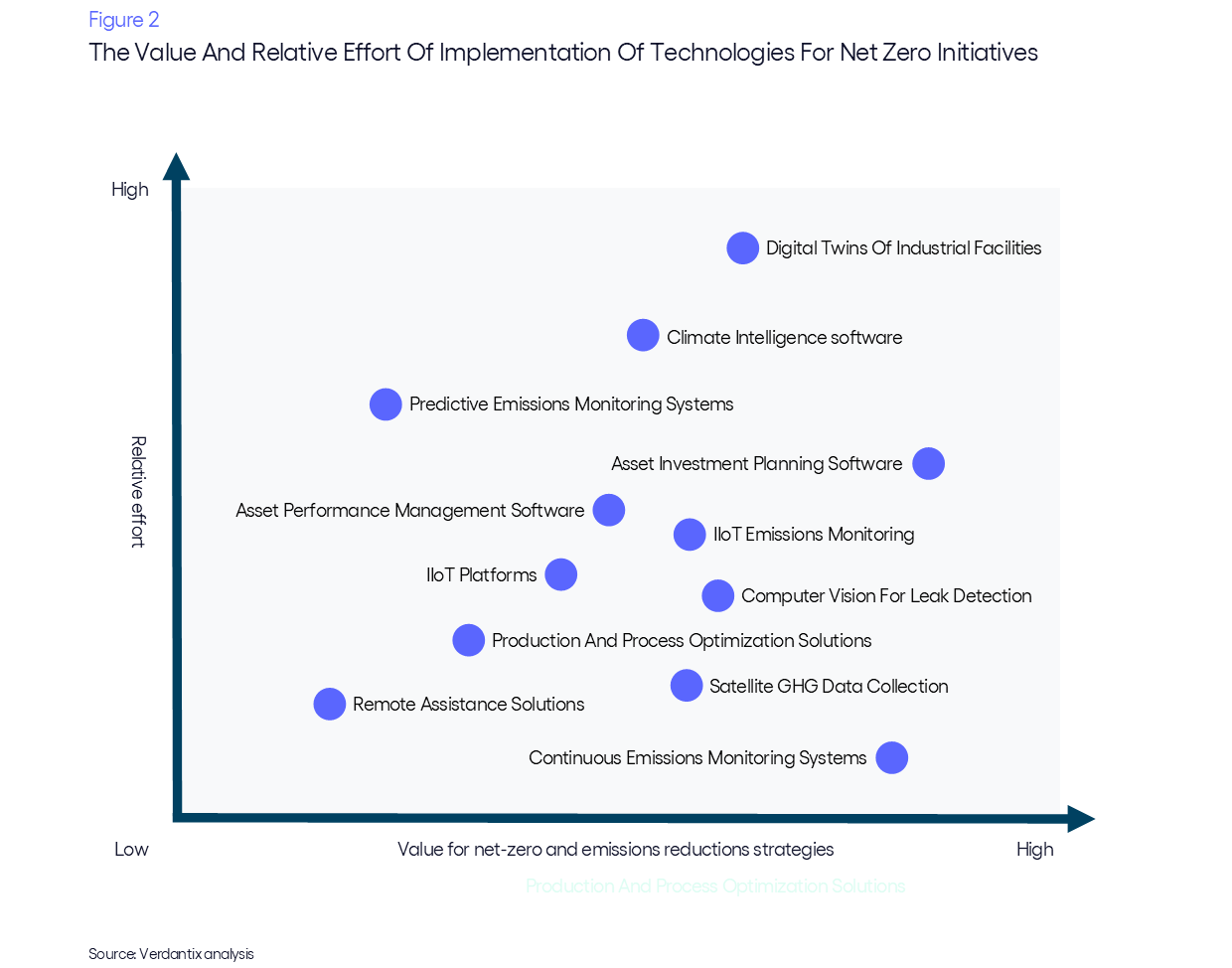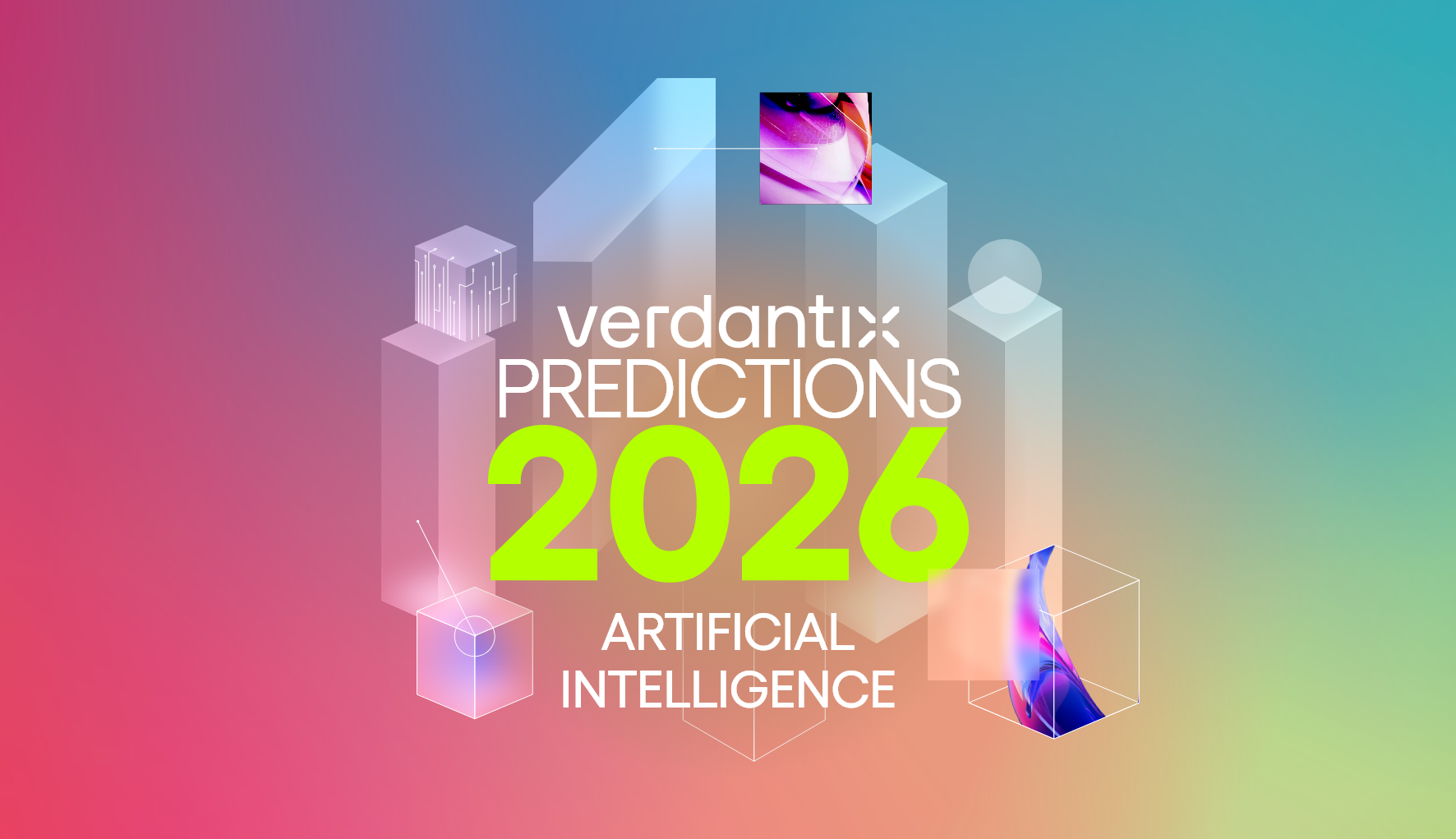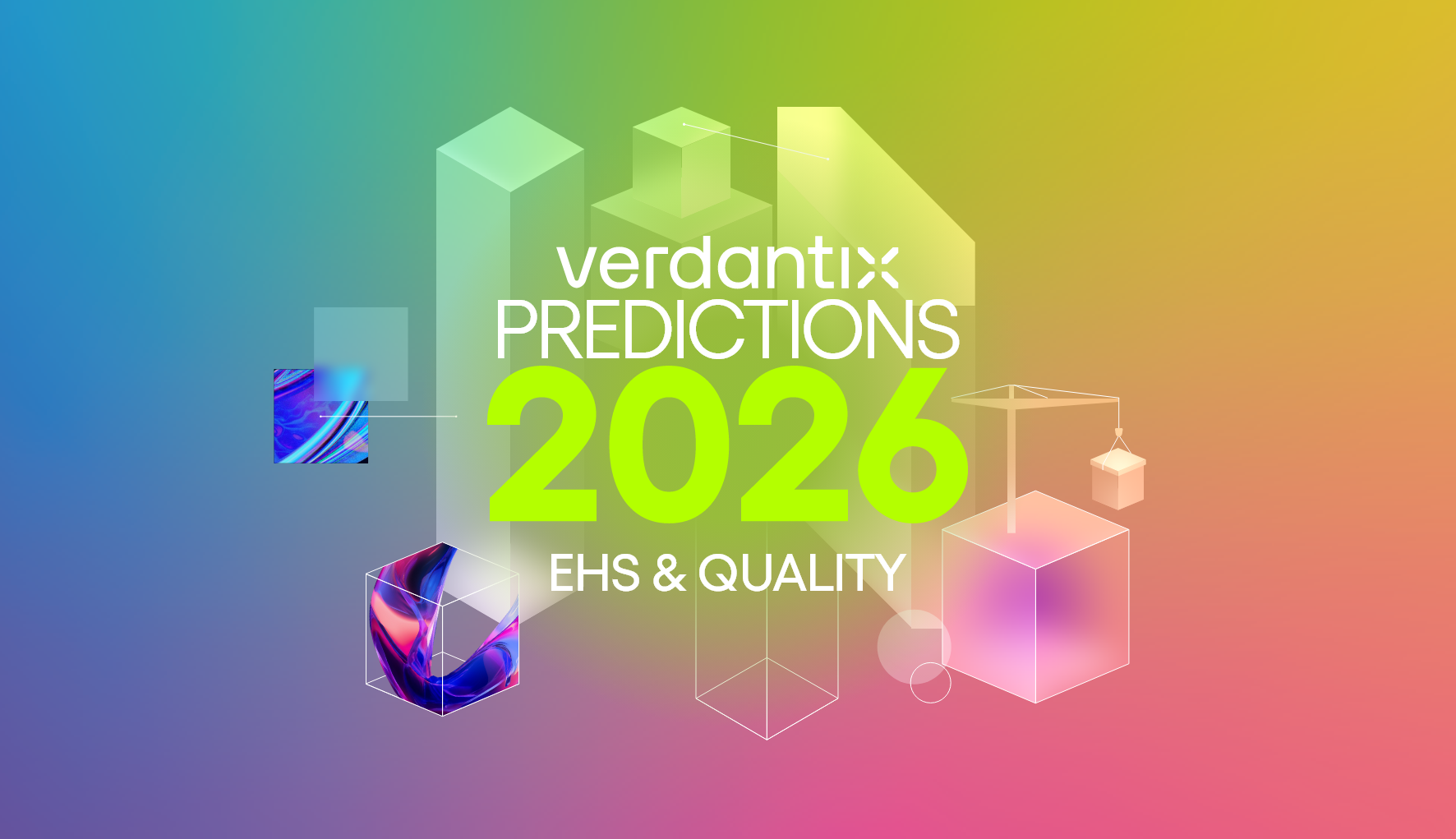Operations Executives Should Leverage Digital Technologies For Sustainability Initiatives

Verdantix Insights
Several contributing factors have led to an increase in interest from industrial firms to further invest in their sustainability strategies, particularly from an energy transition and emissions reduction perspective. These factors have included high profile climate disasters, fluctuating commodity prices, growing pressure from regulators and investors, and accelerating transition to renewable energy sources.
Verdantix identified 12 key digital technologies, from established to novel, that could be leveraged by industrial firms to lower their carbon footprint and achieve net-zero objectives. The Figure below displays them, evaluating the value for net zero and emissions reduction strategies against the relative effort to implement.
Among the technologies evaluated, continuous emissions monitoring systems (CEMS) were found to still be relevant, given their ability to measure GHG emissions and the current regulation wave on industrial plant permits. Digital twins are also being increasingly leveraged for their emissions reductions capabilities, exemplified by Bentley System’s OpenFlows digital twin, which has been utilised by Evides Waterbedrijf, a Netherlands based local water authority, to optimize its pumping stations, reducing overall emissions and saving 33% in energy costs per year. More novel technologies include climate intelligence software, which enables firms to assess asset-level physical risks to mitigate climate events, and satellite GHG data collection, enabling asset intensive industries to monitor potential methane leaks at a site level. Asset investment planning (AIP) software from providers such as Arcadis Gen, Copperleaf and Direxyon delivers the highest value as it enables long term planning by factoring financial elements such as changes in government policy and providing a holistic understanding of long-term risk when used in conjunction with climate intelligence software.

About The Author

Verdantix Insights





